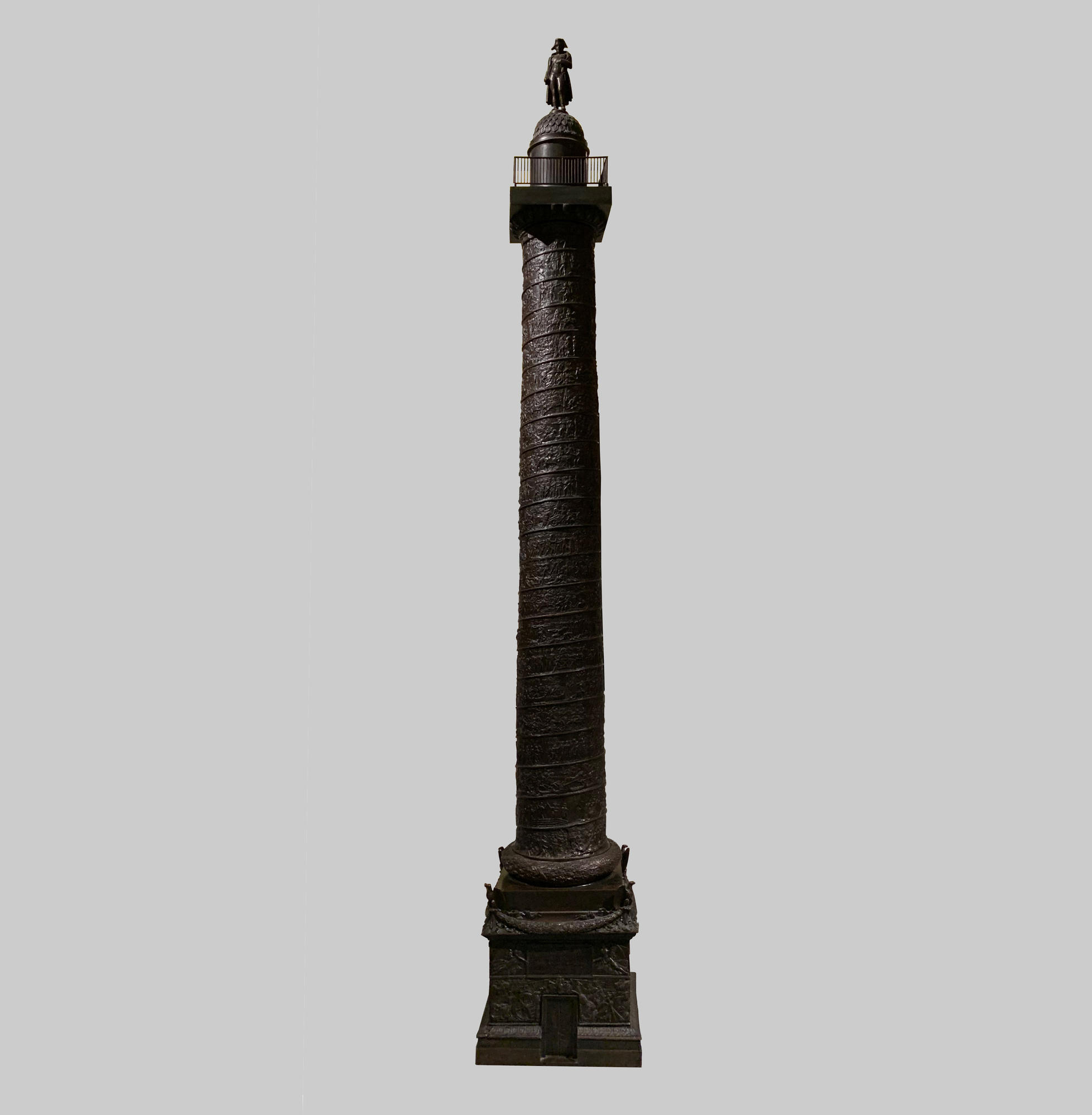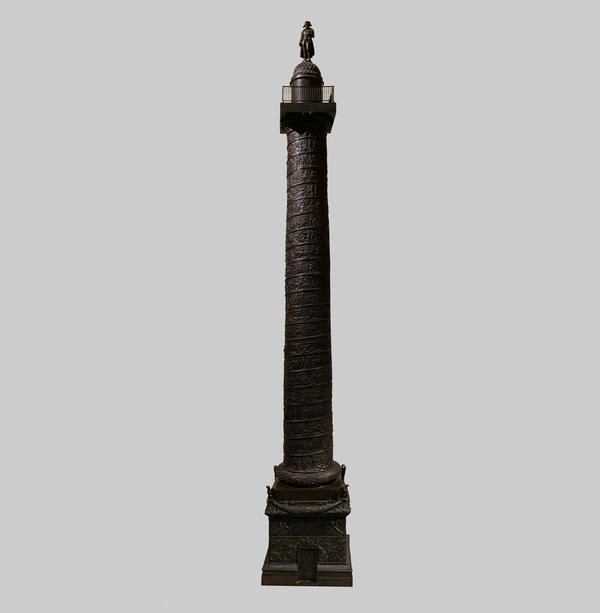Vendome square is in one of the oldest municipal districts of Paris and is to the north of the Tuileries Gardens, in the beginning of a famous rue de la Paix. The Square is created in honour of Louis XIV by the architect Jules Hardouin- Mansart who is famous for such his works as the Grand Trianon and Versailles Notre Dame.
Initially it had been called Place Louis le Grand but later changed its name for Vendome. It got its modern name because of a Palace-Hotel of the Admiral of France, Duke Cesar de Vendome, the illegitimate son of Henry IV, which had been here before. The palace was purchased by Marquis de Louvois who became an initiator of constructing Place Louis le Grand.
The construction began in 1702. First, a bronze equestrian royal statue had been erected as a main decoration, but later during the French Revolution it was thrown off the pedestal and melted. In August of 1810 a new monument, a famous ‘Victory Column’, Vendome column, was solemnly opened in the centre of the square. According to the legend, it was made of hundreds of captured Russian and Austrian cannons which had been melted - but that is not more than a legend. In reality, it is a stone column spirally veneered with bronze bas- reliefs made of the cannons captured during the Battle of Austerlitz.
The statue of Napoleon I Bonaparte designed on the sketches of a sculptor A.D. Shode was on top of the column. The sculpture of the conqueror of Europe was invested with an attire of Roman Emperor, decorated with a laurel wreath, equipped with a sword and a globe. After Paris was captured by the allies and the Bourbon Restoration in 1814, the statue was pulled down and melted. The bronze was added to the bronze, which had been taken from the statue of the Column of the Grande Armee at Boulogne-sur-Mer, and then the equestrian statue of Henry IV that decorates Dauphine Square near the New Bridge was cast.
However, Napoleon is such an odious figure that it was decided to put the statue back. In 1844 on the order of Louis-Philippe I a new sculpture of the great conqueror created by S.H. Surre was made and crowned the " Victory Column’. This time they did without allegories: the sculpture matched the real image of a " small corporal’ and was wearing quite common for its owner a tricorn hat and a redingote.
Misadventures went on twenty-eight years later. In 1871, it was suggested to disassemble and decorate the Hotel des Invalides with it. In May, the monument was taken down, having removed bas- reliefs with the depictions of the campaign of 1805 created by Lepere first. After the suppression of the Paris Commune, it was made a decision to rebuilt the column, and the initiator of demolishing the monument Gustav Courbet was condemned to pay a share in costs on this event. Unable to pay, he left Paris going into exile to Switzerland.
In 1873 the column was finally rebuilt and in 1883 it was crowned with a statue of Napoleon for the third time already. And as if illustrating that things return to the way they were Augustin Simon, a sculptor, presented French Emperor in the image of a Roman Emperor, having dressed him in a short cloak, a laurel wreath and having given him signs of glory.
Initially it had been called Place Louis le Grand but later changed its name for Vendome. It got its modern name because of a Palace-Hotel of the Admiral of France, Duke Cesar de Vendome, the illegitimate son of Henry IV, which had been here before. The palace was purchased by Marquis de Louvois who became an initiator of constructing Place Louis le Grand.
The construction began in 1702. First, a bronze equestrian royal statue had been erected as a main decoration, but later during the French Revolution it was thrown off the pedestal and melted. In August of 1810 a new monument, a famous ‘Victory Column’, Vendome column, was solemnly opened in the centre of the square. According to the legend, it was made of hundreds of captured Russian and Austrian cannons which had been melted - but that is not more than a legend. In reality, it is a stone column spirally veneered with bronze bas- reliefs made of the cannons captured during the Battle of Austerlitz.
The statue of Napoleon I Bonaparte designed on the sketches of a sculptor A.D. Shode was on top of the column. The sculpture of the conqueror of Europe was invested with an attire of Roman Emperor, decorated with a laurel wreath, equipped with a sword and a globe. After Paris was captured by the allies and the Bourbon Restoration in 1814, the statue was pulled down and melted. The bronze was added to the bronze, which had been taken from the statue of the Column of the Grande Armee at Boulogne-sur-Mer, and then the equestrian statue of Henry IV that decorates Dauphine Square near the New Bridge was cast.
However, Napoleon is such an odious figure that it was decided to put the statue back. In 1844 on the order of Louis-Philippe I a new sculpture of the great conqueror created by S.H. Surre was made and crowned the " Victory Column’. This time they did without allegories: the sculpture matched the real image of a " small corporal’ and was wearing quite common for its owner a tricorn hat and a redingote.
Misadventures went on twenty-eight years later. In 1871, it was suggested to disassemble and decorate the Hotel des Invalides with it. In May, the monument was taken down, having removed bas- reliefs with the depictions of the campaign of 1805 created by Lepere first. After the suppression of the Paris Commune, it was made a decision to rebuilt the column, and the initiator of demolishing the monument Gustav Courbet was condemned to pay a share in costs on this event. Unable to pay, he left Paris going into exile to Switzerland.
In 1873 the column was finally rebuilt and in 1883 it was crowned with a statue of Napoleon for the third time already. And as if illustrating that things return to the way they were Augustin Simon, a sculptor, presented French Emperor in the image of a Roman Emperor, having dressed him in a short cloak, a laurel wreath and having given him signs of glory.


